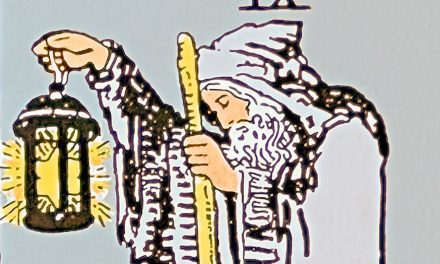Have you heard our podcast?
On the Tria Prima Podcast we have off the cuff conversations about Freemasonry, Tarot and the Western Esoteric Tradition.
Hit the button to subscribe.
As Freemasons, we periodically encounter references to Tarot cards and Tarot imagery in the vicinity of Masonic subjects. The frequency of the exposure to Tarot imagery is much greater among those who are involved in the more esoteric avenues of Masonic research. This may cause the Mason to wonder why this is the case. It is the purpose of this article to elucidate what connections there may be between this strange deck of cards and our noble Craft. We will consider from whence these cards came and how Freemasons helped shape their evolution at nearly every crucial juncture in their development.
While playing cards themselves are believed to have been introduced into Europe sometime in the early 14th century, it is generally believed that the Tarot deck was invented sometime between 1411 and 1425 by adding the twenty-two trump cards to the standard playing card deck. At that time, playing cards had fifty-six, not fifty-two, cards due to their being an additional court card. The addition of the trumps meant that a Tarot deck had seventy-eight cards total – forty pips, sixteen court cards, and twenty-two trumps. These additional cards, which are pictorial in design, have come to be known as the Major Arcana – a designation bestowed on them by Freemason Arthur Edward Waite, whom we shall discuss shortly. The word trump is an Anglicization of the Italian word trionfi, meaning a victory or celebratory procession, and shares this etymological root with the word triumph.
While Tarot had already been in use for divination and fortune-telling for some time, the beginnings of Tarot esotericism can be traced to the publication of Le Monde Primitif in 1781 by Swiss Freemason Antione De Gébelin (initiated 1771 at Lodge Les Amis Réunis). In his book, DeGébelin interprets the symbolism of the Marseilles Tarot, ultimately concluding that the origins of the mysterious deck point back to ancient Mystery Traditions, such as those of Isis and Osiris, and other survivals of arcane religious symbolism. De Gébelin was also the first to propose that the Tarot was composed as a distillation of the collected wisdom contained at the Library of Alexandria, which was destroyed by fire in 48 BCE, and that the deck thereby contained cryptic arcana from the ancient world. This arcana, however, was encoded in symbolism meant only to be deciphered by those of a certain attainment in the language of symbols; this challenge seems to have attracted many Freemasons to the task.
The attribution of the twenty-two letters of the Hebrew alphabet to the twenty-two trump cards in the Major Arcana is believed to have been first made by Éliphas Lévi (a Hebrew transliteration of his given name, Alphonse Louis Constant; initiated 1861 at Lodge Rose du Parfait Silence), an eminent occultist, Rosicrucian and Freemason. Lévi’s magnum opus, Dogme et Rituel de la Haute Magie (English: Dogma and Ritual of High Magic, 1854 & 1856), is divided into twenty-two chapters, each corresponding to a letter of the Hebrew alphabet and to the cards of the Tarot’s Major Arcana. Other correspondences relating to qabalah, alchemy, astrology, hermeticism and, of course, ceremonial magick are made throughout the work and attributed to their corresponding Tarot card and Hebrew letter. The book was especially influential to Albert Pike, who cribbed large uncredited passages of Lévi’s work for inclusion in his Morals and Dogma of the Ancient and Accepted Scottish Rite of Freemasonry (1871). Lévi’s chief translator and commentator latter in the 19th century and into the 20th was Arthur Edward Waite – a Mason whose shadow continues to loom long over the world of the Tarot.
A. E. Waite was a co-creator of the Rider-Waite tarot deck.
Freemason and Masonic Rosicrucian, Arthur Edward Waite (initiated 1901 at Runymede Lodge No. 2430) was alsoa member of the Hermetic Order of the Golden Dawn – a Victorian magical society founded in 1887, which had a focus on hermetic qabalah, whose curriculum and rituals were based on cipher manuscripts which had beenprocured from the property of Freemason Kenneth MacKenzie after his death. Due to his research and experience in the Order, Waite undertook the revision of the Tarot in accordance with hermetic and qabalistic correspondences. Enlisting fellow Golden Dawn member, artist Pamela Colman Smith – who rendered the original images in gouache and ink on paper, Waite irretrievably altered the landscape of the Tarot and, to this day, the Rider-Waite Tarot Deck, as it has come to be known, is the most recognizable deck in the world. There are also several allusions made in the imagery that, while they may escape the notice of the profane, most Masons would be able to discern.
Later in the 20th century, Freemasons such as Paul Foster Case (initiated 1926 at Fairport Lodge No. 476) and Manly P. Hall (initiated 1954 at Jewel Lodge No. 374), among others, have contributed to the evolution of this strange pack of cards – a pack of cards which continue to fascinate both the initiated and the profane, but seem to have a particularly strong resonance with Freemasons.







